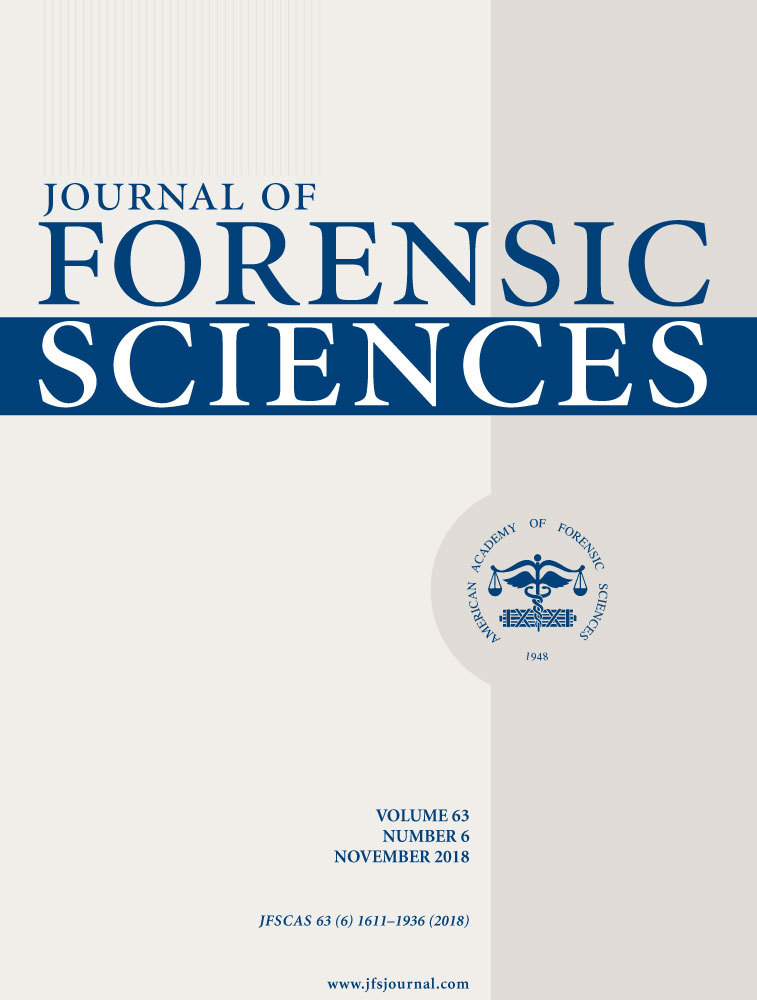Development of Latent Fingermarks on Nonporous and Semiporous Substrates Using Photoluminescent Eu(Phen)2 Complex Intercalated Clay Hybrids with Enhanced Adhesion†
Abstract
In forensic science, developing latent fingermarks using powders is a critical, general method to identify individuals. Photoluminescent Eu(Phen)2 complex intercalated clay hybrids have been used to improve the visualization of fingermarks on nonporous (glass and polymer film) and semiporous (euro and dollar banknotes) substrates. An ion exchange reaction has been successfully used to intercalate Eu(Phen)2 complex ions into the interlayer spacing of two different Na+-clays, Na+-montmorillonite and Na+-hectorite, with different primary particle sizes. To change the surface properties of the obtained hybrid to be more lipophilic, the hydroxyl groups at the edge of the hectorite hybrid were modified with hexadecyltrimethoxysilane via silylation. We investigated the correlation of the size and surface properties of the hybrids with their adhesion to fingermark residues. Fingermarks were successfully visualized using hybrids under UV illumination. In particular, ridge details on semiporous substrates can be more clearly seen using hybrids with smaller primary particles and greater lipophilicity.




